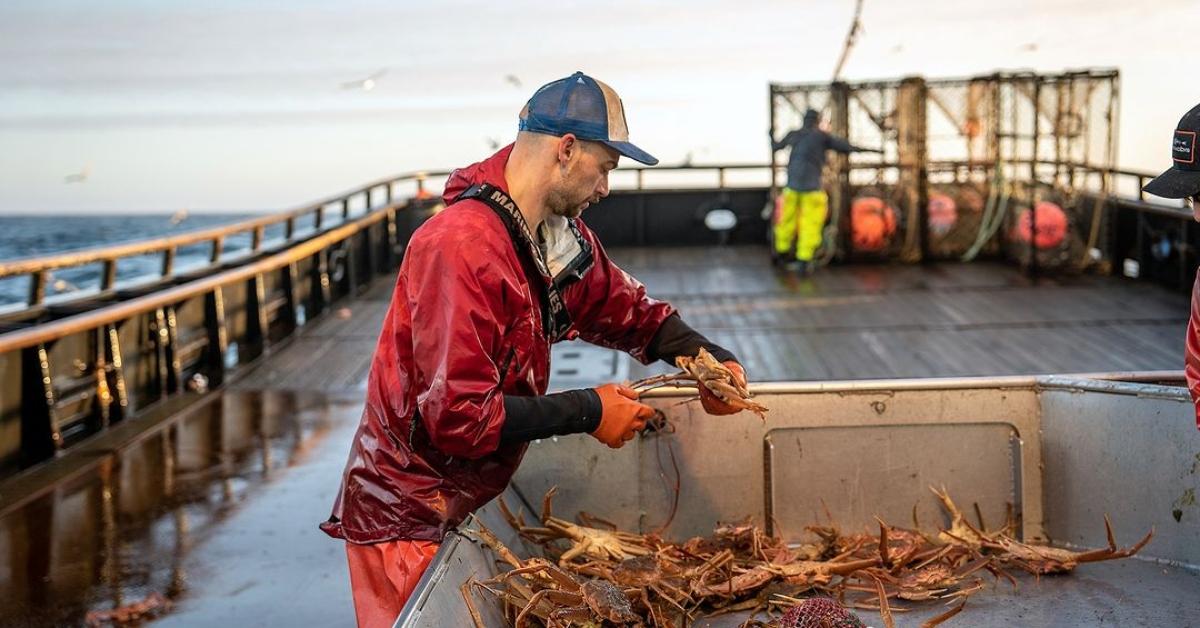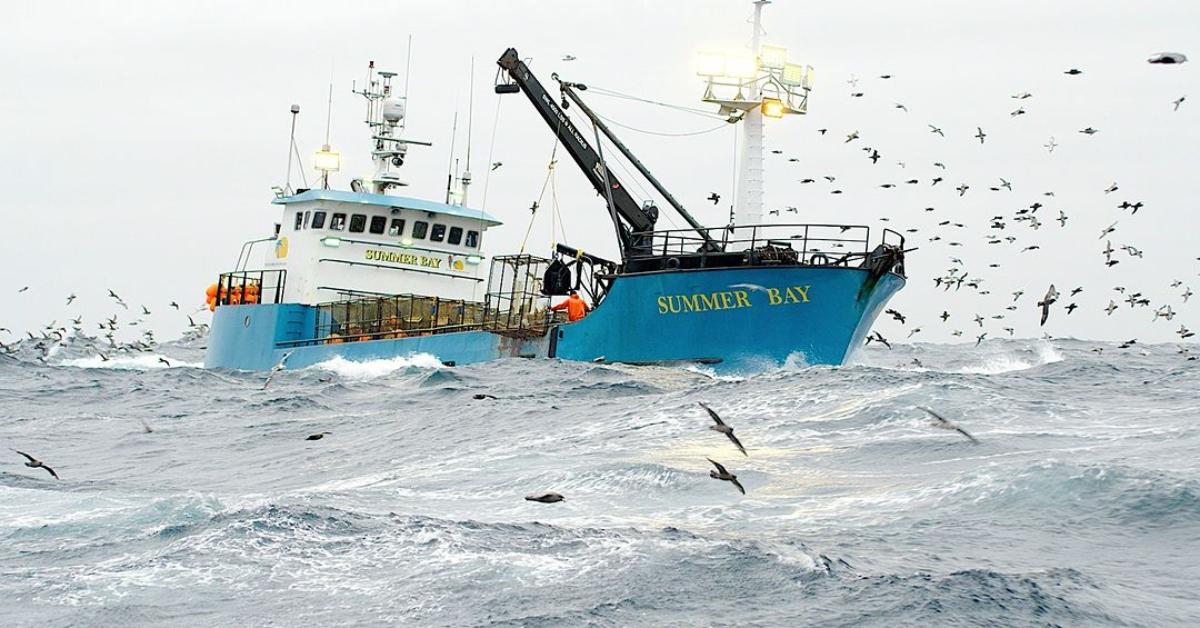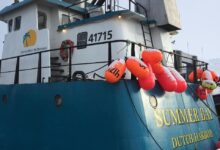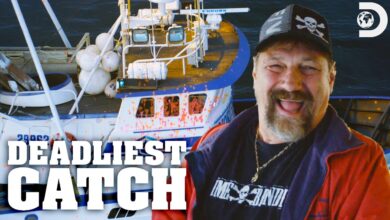The ‘Deadliest Catch’ Crab Season Can Last Longer for the Fishermen Than What Fans See
The ‘Deadliest Catch’ Crab Season Can Last Longer for the Fishermen Than What Fans See

Since it first premiered on Discovery on April 12, 2005, Discovery’s Deadliest Catch has shown the beauty — and danger — of living and working out at the Bering Sea. Fans have come to know the brave fishermen who risk their lives to search for the best crabs money (and we mean lots of money) can buy. The task has been labeled one of the most dangerous jobs in the world, and only a select few are willing to come back season after season.
Season 20 of the series follows some of the fishermen returning to prove they’re not new to the Alaskan Crab Fishing game, but true to it. The new season shows many of the fishermen battling health diagnoses and other personal struggles during the crab season. But as fans already know, we see the fishermen’s journeys months after it already happened. This leaves many to wonder just how long the crab season on Deadliest Catch lasts.

How long is crab season on ‘Deadliest Catch?’
Many reality shows make fans ask, “Was that real?” from their perspective couches. However, there’s not much to script on Deadliest Catch, especially when they’re navigating the scary Bering Sea waters. While those watching at home would rethink being immersed in a deadly sea, the Deadliest Catch fishermen consider the sea their second home, as they spend a lot of time in the water during the year.
Deadliest Catch follows the fishermen during the busy crab season between October and January. The October season marks the king crab season and lasts until the January opilio season. The season could sometimes last longer, causing the fishermen to endure harsh winds, shorter days, and being away from loved ones for longer.
Why does the length of time at sea on ‘Deadliest Catch’ vary?
While the busy crab season is in the winter months, each fisherman’s time on the sea for Deadliest Catch or otherwise varies. According to Alaskan King Crab Co.’s website, the season’s length will depend on “the fishing guidelines or quota established for the year,” which changes each year.
Seasoned Deadliest Catch cinematographer David Reichert echoed the site’s information in a 2020 interview with Gold Derby. During the interview, Reichert said the length of the crabbing journey could last from a few weeks to a few extra months at sea.
“I’d say a usual season, you’re gonna be out there four weeks,” he explained. “But don’t be surprised if you’re out there two months, and maybe more.”
Reichert also debunked any theories that the Deadliest Catch cast can take a breather once the cameras stop rolling. He said that the fishermen’s hardships are real and are fully committed to their lives at sea once the busy season starts.
“You’re out there,” he said of the crew during crab season. “You’re on the boats 24/7. You’ll come in, offload you’re crab… and you’re back out.”
The crab fishing season on Deadliest Catch is indeed more grueling and extensive than what fans see on television. The show compresses weeks and sometimes months of hard work, danger, and drama into a series of episodes, providing viewers with the highlights and most compelling moments of the fishermen’s efforts. However, the reality of crab fishing is far more demanding and prolonged.
Duration and Intensity of the Season
The crab fishing season typically lasts several months, depending on the type of crab being harvested and the regulatory quotas set for that year. For instance, the Alaskan king crab season can last from October to January, while the opilio crab (snow crab) season usually runs from January to March or April. During these periods, fishermen work around the clock, often enduring 18- to 20-hour workdays in some of the most treacherous conditions imaginable.
Preparation and Maintenance
Before the actual fishing begins, there is a significant amount of preparation involved. Crews spend weeks getting their vessels ready, ensuring that all equipment is in top condition, and loading supplies. This preparation is crucial for the safety and efficiency of their operations. Maintenance and repairs are ongoing tasks throughout the season, as the harsh conditions can take a toll on both the ship and its gear.
Challenges and Risks
Crab fishing in the Bering Sea is notoriously dangerous, with risks that include severe weather, rough seas, and the physical toll of the work itself. Injuries and equipment failures are common, and the crews must constantly be vigilant to avoid accidents. The mental and emotional stress is also significant, as the isolation and high stakes can wear on even the most experienced fishermen.
Regulatory and Market Pressures
Fishermen must also navigate regulatory pressures, ensuring they stay within their quota limits and adhere to strict guidelines set by fishery management authorities. Market conditions can impact the profitability of their catch, adding another layer of uncertainty to an already unpredictable profession.
Behind-the-Scenes Realities
The reality of crab fishing involves long periods of monotony interspersed with intense bursts of activity. The show focuses on the most dramatic and engaging moments, but the daily grind is often repetitive and exhausting. Crew members spend countless hours setting and hauling pots, sorting crabs, and maintaining the vessel, with little downtime in between.
Financial Stakes
The financial stakes are high for these fishermen. A successful season can mean substantial earnings, but the costs of running a fishing operation are equally high. Fuel, equipment, crew wages, and maintenance expenses quickly add up, and a poor season can result in significant financial losses.
In summary, while Deadliest Catch provides a thrilling glimpse into the world of crab fishing, the actual season is far longer and more arduous than what is portrayed on screen. The fishermen endure months of relentless work, harsh conditions, and constant challenges to bring in their catch, demonstrating remarkable resilience and determination.


